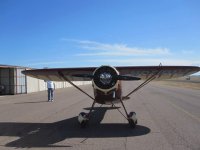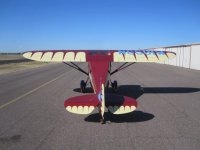The RV15 is almost exactly what I want to build next. I like the high wing, the sturdy rough field landing gear, the huge cargo capability, and you know, "the thing". However, the 140 kt cruise speed burning 10 gallons an hour is less than optimum. I am used to much faster speeds and efficiencies from my other RV builds. What if some compromise to the short field, runway performance could be sacrificed in exchange for another 10 or 20 kts of cruise speed?
Would a reduction in the wing span allow for such an increase? Would that reduction still allow for a reasonable stall speed and still be MOSAIC compliant?
In my 30 years of flying RVs, I have never had a need to operate off a 300 foot runway. I have wished for more robust gear many times, but never needed to land on a sandbar.
Is there a clever engineer out there can run some numbers to estimate the amount of wing area that could be removed to get the higher cruise number and what that would do to the stall speeds, and runway requirements?
If this compromise wing could yield the desired numbers, maybe Vans could offer it up as an option.
A builder could also shorten the wings and control surfaces and call it something other than an RV if Vans won't play.
Flame away.
Would a reduction in the wing span allow for such an increase? Would that reduction still allow for a reasonable stall speed and still be MOSAIC compliant?
In my 30 years of flying RVs, I have never had a need to operate off a 300 foot runway. I have wished for more robust gear many times, but never needed to land on a sandbar.
Is there a clever engineer out there can run some numbers to estimate the amount of wing area that could be removed to get the higher cruise number and what that would do to the stall speeds, and runway requirements?
If this compromise wing could yield the desired numbers, maybe Vans could offer it up as an option.
A builder could also shorten the wings and control surfaces and call it something other than an RV if Vans won't play.
Flame away.






